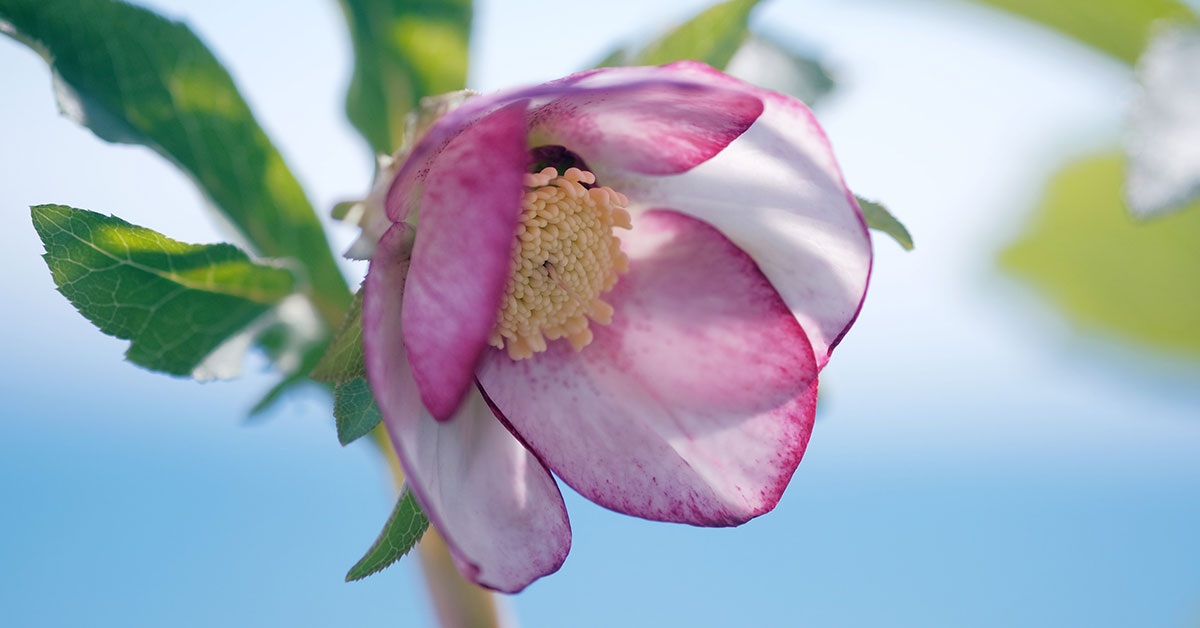Amidst the quiet beauty of winter and the awakening of early spring, few flowers captivate the gardener’s heart quite like the hellebore. With their exquisite blooms that gracefully emerge from the frost-covered earth, hellebores enchant with a touch of magic when other plants lie dormant.
In this comprehensive guide, we delve into the art of growing hellebores, unlocking the secrets to cultivating these resilient beauties in your garden. From selecting the perfect site to nurturing their unique needs, we explore the steps and techniques that will help you create a flourishing haven of hellebores, embracing their enchantment and transforming your garden into a tapestry of delicate hues and enduring elegance.
So, let us embark on a journey into the captivating world of hellebore growing, where winter’s embrace becomes a canvas for floral artistry and nature’s resilience.
What is Hellebore?
Hellebore, also known as Christmas rose or Lenten rose, is a genus of flowering plants in the family Ranunculaceae. The scientific name for hellebore is Helleborus. It comprises several species of perennial plants native to Europe and parts of Asia. Hellebores are known for their attractive flowers, often blooming in late winter or early spring, providing a splash of color during the colder months.
Hellebores are herbaceous plants that typically grow in clumps and have deeply lobed, evergreen foliage. The flowers are bowl-shaped and come in a variety of colors, including shades of white, pink, purple, green, and even dark maroon. Some hellebore species have nodding flowers, while others have more upright blooms.
These plants are highly valued for their ability to thrive in shade or partial shade, making them popular choices for woodland gardens, shade gardens, and borders. They prefer moist, well-draining soil and can tolerate a range of soil types. Hellebores are generally low-maintenance and have a long lifespan, often growing for many years.
It’s important to note that while hellebores are beautiful and widely enjoyed, they are also toxic. The plants contain compounds that can cause skin irritation and are toxic if ingested. Therefore, caution should be exercised when handling hellebores, and they should be kept away from children and pets.
Hellebores are prized for their ability to add elegance and color to winter and early spring landscapes when few other plants are in bloom. Their adaptability, long-lasting flowers, and attractive foliage make them a cherished addition to gardens and an enchanting sight during the colder months.
Where is Hellebore native?
Hellebore plants are native to various regions of Europe and parts of Asia. Their natural habitats span several countries and include:
- Europe: Hellebores are native to several European countries, including but not limited to the United Kingdom, France, Germany, Italy, Greece, Spain, and Turkey. Different species of hellebores may have more specific native ranges within these countries.
- Asia: Hellebores are also found in parts of Asia, particularly in countries such as Russia, Georgia, Armenia, Azerbaijan, and Iran. In these regions, hellebores are known to grow in diverse habitats, including woodlands, meadows, and mountainous areas.
It’s important to note that specific hellebore species may have narrower native ranges within these broader regions. Additionally, hellebores have been cultivated and introduced to various other parts of the world, often due to their ornamental value. As a result, hellebores can now be found in gardens and landscapes across different continents, beyond their original native habitats.
How to grow Hellebore
Hellebores are beautiful and resilient plants that can be grown in a variety of garden settings. Here are some general guidelines for successfully growing hellebores:
- Site Selection: Choose a suitable location for your hellebores. They prefer partial shade to full shade, although some varieties can tolerate more sunlight. Ideally, select a spot with dappled shade or morning sun with afternoon shade. Hellebores thrive in well-draining soil rich in organic matter.
- Soil Preparation: Prepare the soil before planting. Add organic matter, such as compost or well-rotted manure, to improve soil fertility, moisture retention, and drainage. Hellebores prefer slightly alkaline to neutral soil pH levels.
- Planting: Plant hellebores in early fall or early spring. Dig a hole that is wide and deep enough to accommodate the plant’s root ball. Place the hellebore in the hole at the same level it was growing in its container, ensuring that the crown of the plant is slightly above the soil surface. Fill the hole with soil, firming it gently around the roots.
- Watering: Water hellebores regularly, especially during dry periods. Keep the soil evenly moist but not waterlogged. Once established, they are relatively drought-tolerant. Avoid overhead watering, as it can encourage foliar diseases.
- Mulching: Apply a layer of organic mulch, such as leaf mold or wood chips, around the base of the plants. Mulching helps retain soil moisture, suppresses weeds, and protects the shallow root systems of hellebores.
- Fertilizing: Hellebores are not heavy feeders but can benefit from an annual application of balanced slow-release fertilizer in early spring. Follow the package instructions for proper dosage.
- Maintenance: Remove any faded or damaged leaves and flowers as needed. This tidies up the plants and reduces the risk of disease. Cut back the foliage in late winter or early spring before new growth emerges to showcase the flowers better.
- Division: Hellebores can be divided every few years to maintain their vigor. This is best done in early spring before new growth starts. Carefully dig up the clumps, separate them into smaller divisions, ensuring each division has sufficient roots, and replant them in desired locations.
Hellebores are generally low-maintenance plants once established. They can provide years of beautiful blooms and add charm to your garden, especially during the winter and early spring months when few other plants are in flower.













